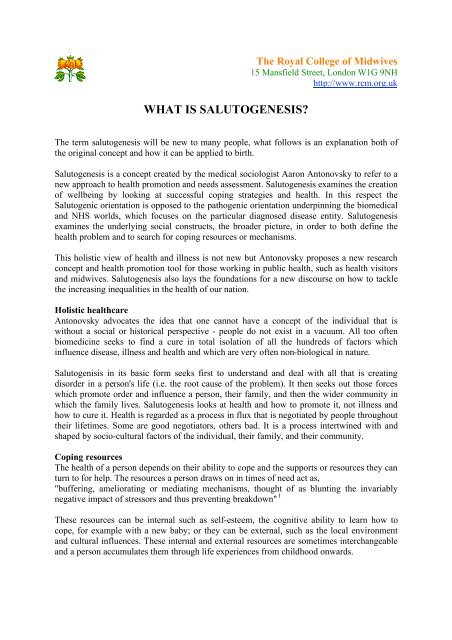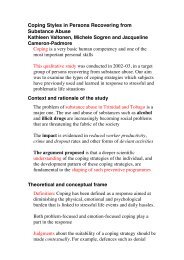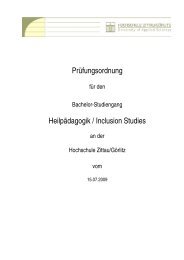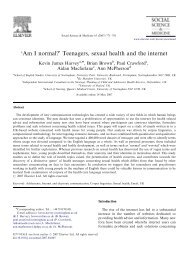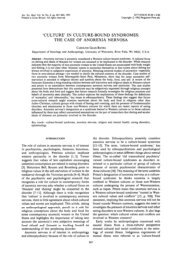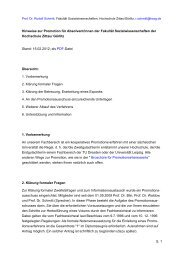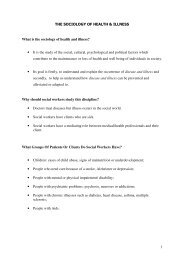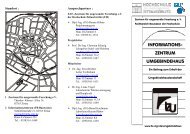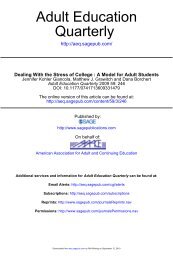WHAT IS SALUTOGENESIS?
WHAT IS SALUTOGENESIS?
WHAT IS SALUTOGENESIS?
Create successful ePaper yourself
Turn your PDF publications into a flip-book with our unique Google optimized e-Paper software.
<strong>WHAT</strong> <strong>IS</strong> SALUTOGENES<strong>IS</strong>?<br />
The Royal College of Midwives<br />
15 Mansfield Street, London W1G 9NH<br />
http://www.rcm.org.uk<br />
The term salutogenesis will be new to many people, what follows is an explanation both of<br />
the original concept and how it can be applied to birth.<br />
Salutogenesis is a concept created by the medical sociologist Aaron Antonovsky to refer to a<br />
new approach to health promotion and needs assessment. Salutogenesis examines the creation<br />
of wellbeing by looking at successful coping strategies and health. In this respect the<br />
Salutogenic orientation is opposed to the pathogenic orientation underpinning the biomedical<br />
and NHS worlds, which focuses on the particular diagnosed disease entity. Salutogenesis<br />
examines the underlying social constructs, the broader picture, in order to both define the<br />
health problem and to search for coping resources or mechanisms.<br />
This holistic view of health and illness is not new but Antonovsky proposes a new research<br />
concept and health promotion tool for those working in public health, such as health visitors<br />
and midwives. Salutogenesis also lays the foundations for a new discourse on how to tackle<br />
the increasing inequalities in the health of our nation.<br />
Holistic healthcare<br />
Antonovsky advocates the idea that one cannot have a concept of the individual that is<br />
without a social or historical perspective - people do not exist in a vacuum. All too often<br />
biomedicine seeks to find a cure in total isolation of all the hundreds of factors which<br />
influence disease, illness and health and which are very often non-biological in nature.<br />
Salutogenisis in its basic form seeks first to understand and deal with all that is creating<br />
disorder in a person's life (i.e. the root cause of the problem). It then seeks out those forces<br />
which promote order and influence a person, their family, and then the wider community in<br />
which the family lives. Salutogenesis looks at health and how to promote it, not illness and<br />
how to cure it. Health is regarded as a process in flux that is negotiated by people throughout<br />
their lifetimes. Some are good negotiators, others bad. It is a process intertwined with and<br />
shaped by socio-cultural factors of the individual, their family, and their community.<br />
Coping resources<br />
The health of a person depends on their ability to cope and the supports or resources they can<br />
turn to for help. The resources a person draws on in times of need act as,<br />
"buffering, ameliorating or mediating mechanisms, thought of as blunting the invariably<br />
negative impact of stressors and thus preventing breakdown" 1<br />
These resources can be internal such as self-esteem, the cognitive ability to learn how to<br />
cope, for example with a new baby; or they can be external, such as the local environment<br />
and cultural influences. These internal and external resources are sometimes interchangeable<br />
and a person accumulates them through life experiences from childhood onwards.
Sense of coherence: sense of wellbeing<br />
Collectively, resources promote the development and maintenance of a strong 'sense of<br />
coherence', which is synonymous with health. The stronger the sense of coherence a person<br />
has, the better ability they have to employ cognitive, affective and instrumental strategies<br />
which are likely to improve coping 2 and thus wellbeing. There is not one coping strategy but<br />
many, and a person who copes well, who has a strong sense of coherence, is able to select the<br />
best way of dealing with the particular stressor. Each person's sense of coherence, or sense of<br />
wellbeing, requires certain inherent prerequisites for coping successfully, as follows:<br />
1) Meaningfulness: the deep feeling that life makes sense emotionally; that life's<br />
demands are worthy of commitment. It is essentially seeing coping as desirable.<br />
2) Manageability: the extent to which people feel they have the resources to meet the<br />
demands, or feeling that they know where to go to get help.<br />
3) Comprehensibility: the extent to which a person finds or structures their world to be<br />
understandable, meaningful, orderly and consistent instead of chaotic, random and<br />
unpredictable. 3<br />
The extent to which a person develops these prerequisites - the extent to which a person has<br />
pervasive, enduring and dynamic feelings of confidence that things will work out as well as<br />
can be reasonably expected - is determined by that person's sense of coherence. 4 This is<br />
firmly grounded in the person's own context and culture and Antonovsky emphasises that a<br />
person's socialisation is fundamental to how a person sees the world and how strong their<br />
sense of coherence will be. For this reason salutogenesis considers social and health capital as<br />
determining factors in the creation of a sense of coherence.<br />
Social capital can be described as levels of reciprocity in the community, trust, co-operation<br />
and social cohesion. Health capital are those factors which influence health and could include<br />
socio-economic background, childhood history and coping skills.<br />
From theory to practice<br />
The possible conclusions from Antonovsky's work are that one can expose a child to life<br />
experiences which will contribute to a strong sense of coherence and therefore increase that<br />
child's overall wellbeing. Although he feels it is less likely to be able to successfully<br />
intervene in adult perceptions of health and coping strategies, others would say it is possible<br />
to maximise their resources and accessibility to a strong sense of coherence and thus<br />
wellbeing.<br />
Antonovsky's theory postulates that health visitors should be given the resources to<br />
experiment with salutogenesis in a public health promotion facet. This will contribute greatly<br />
to a NHS which is conversing only in disease and clinical rhetoric.<br />
Salutogenesis is a research tool which can be used as a starting point by all those concerned<br />
with promoting health. By being able to understand how people manage their health, what<br />
resources they use (they could be negative, for example a neighbour may suggest adding<br />
alcohol to milk to pacify a baby) and then working to increase that person's positive<br />
resources. This may then extend to working with people in the community, from housing<br />
planners, social workers to community groups. This is the essence of salutogenesis; that<br />
experts should be open "to what is going on in seemingly unrelated fields in an attempt to<br />
2
consider the underlying problems shared by many, and, above all to learn from coping<br />
successes" 5 in order to improve health.<br />
Salutogenesis applied to birth<br />
Used in the context of birth, salutogenesis would recognise women and their ways of seeing<br />
and of birthing. It would entail respect for the subtle hormonal interaction between mother<br />
and infant, which is intrinsic and essential to the wellbeing of both in the future.<br />
A salutogenic birth would generate positive short and long-term wellbeing for the mother,<br />
baby, family and caregiver. It would follow the same pattern of assessing a woman's<br />
resources, sense of coherence and thus wellbeing. Fundamentally, instead of looking at 'risk<br />
factors' it would look at health factors. It is acknowledged that although the concept of<br />
salutogenesis is not immediately user-friendly, its components are essentially applicable to<br />
the maternity service. 6<br />
Downe argues the concept is, "fundamentally both a descriptor of a normal birth process and<br />
an outcome of that birth process". And equally importantly, includes "the possibility that the<br />
small number of women who may need technological help could birth positively if the<br />
presence" of manageability, comprehensibility and meaningfulness for each woman is held to<br />
be the measure of optimum birth. 7<br />
The theory can fit easily with birth because it is about the promotion of wellbeing - 'health<br />
creation'. It also goes some way to examine why certain sectors of society are disadvantaged<br />
in their health-seeking options and the care they receive. By looking at the process by which<br />
people draw on their internal and external resources, midwives will be able to ascertain why<br />
their health and that of their baby is suffering. They can also work in a public health role to<br />
increase a woman's resources - manageability and meaningfulness and overall wellbeing. It<br />
will also influence a woman's ability to adapt to motherhood and to be a competent parent. In<br />
a way it is helping to empower women - not treating just the clinical but the social, economic,<br />
political, personal factors which this theory postulates determine the resources a woman can<br />
draw on to both promote health and combat illness.<br />
References<br />
1. Antonovsky A (1993) The implications of salutogenesis: an outsiders's view. In: Turnbull<br />
AP, Patterson JM, Behr SG et al (eds.) Cognitive coping: families and disability. Baltimore:<br />
Brookes<br />
2. ibid.<br />
3. Colorado State University Counseling Center: Stress Management Services. Effective selfhelp<br />
for stress (http://www.colostate.edu/Depts/Counseling/SMP/ezstress.htm)<br />
4. Cowley S, Billings J (1999) Resources revisited: salutogenesis from a lay perspective.<br />
Journal of Advanced Nursing 29(4): 994-1004<br />
5. Antonovsky A (1993) The implications of salutogenesis: an outsiders's view. In: Turnbull<br />
AP, Patterson JM, Behr SG et al (eds.) Cognitive coping: families and disability. Baltimore:<br />
Brookes<br />
6. Downe S (2001) Defining normal birth. MIDIRS Midwifery Digest 11(Supp 2): S31-3<br />
7. ibid.<br />
May 2002<br />
Royal College of Midwives<br />
Virtual Institute for Birth: Salutogenesis in support of normality<br />
3


